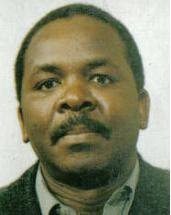In Joseph R. Alila’s first anthropological novel, SUNSET ON POLYGAMY, marital cultural lore and spirituality combine to breed a tragic confusion in a land faced with a deadly new disease epidemic, with public debates raging as to whether the killer is ancestral
In this work of fiction, Joe Ochom, a young man testing his verbal skills in the art of seduction, soon realizes that corralling an educated girl (Megan) requires more than adorning his high school blazer in the marketplace. He proves cowardly—a weakness his principal competitor, polygamist Jim Kokech, is quick to exploit.
With his attention on Megan, Jim suddenly faces a revolt from his wives. Felicia, the first wife, resolves to punish him; she locks him out of her bedroom, just when they must celebrate the planting season as the principal “spiritual co-owners” of the home. Jim’s pastoral calendar comes to a sudden halt—reminding him that the Luo
Baby boom! A year later, Felicia looks on in anger as the home welcomes three newborns, with Maria, Milka, and Nyapora presenting a child each to their shared husband. Felicia has reached menopause, but instead of embracing her new physiological reality, and aging gracefully as the matriarch of her home, she becomes angry at Jim and her co-wives. Struggling with a broiling bout of jealousy at her co-wives and nursing unpredictable desires of her husband, Felicia brews one immoral “romantic” mischief after another and nearly kills her husband while trying a cultic remedy to her marital problems. Depressed, Felicia flees to the Big City to escape the shameful spectacle she has become among the women of Korondo Ridge.
Korondo Ridge still has no rest: Gina—a young widow who has just delivered the body of her late husband, George Amolo, from the Big City—refuses, to the utter dismay of elders, to welcome any man into her bed, arguing that her husband died of “a strange new disease”. The elders refuse to listen, asserting that George died of his father’s
Tragedy! The killer malady the elders call
Felicia returns to Korondo Ridge amid the
